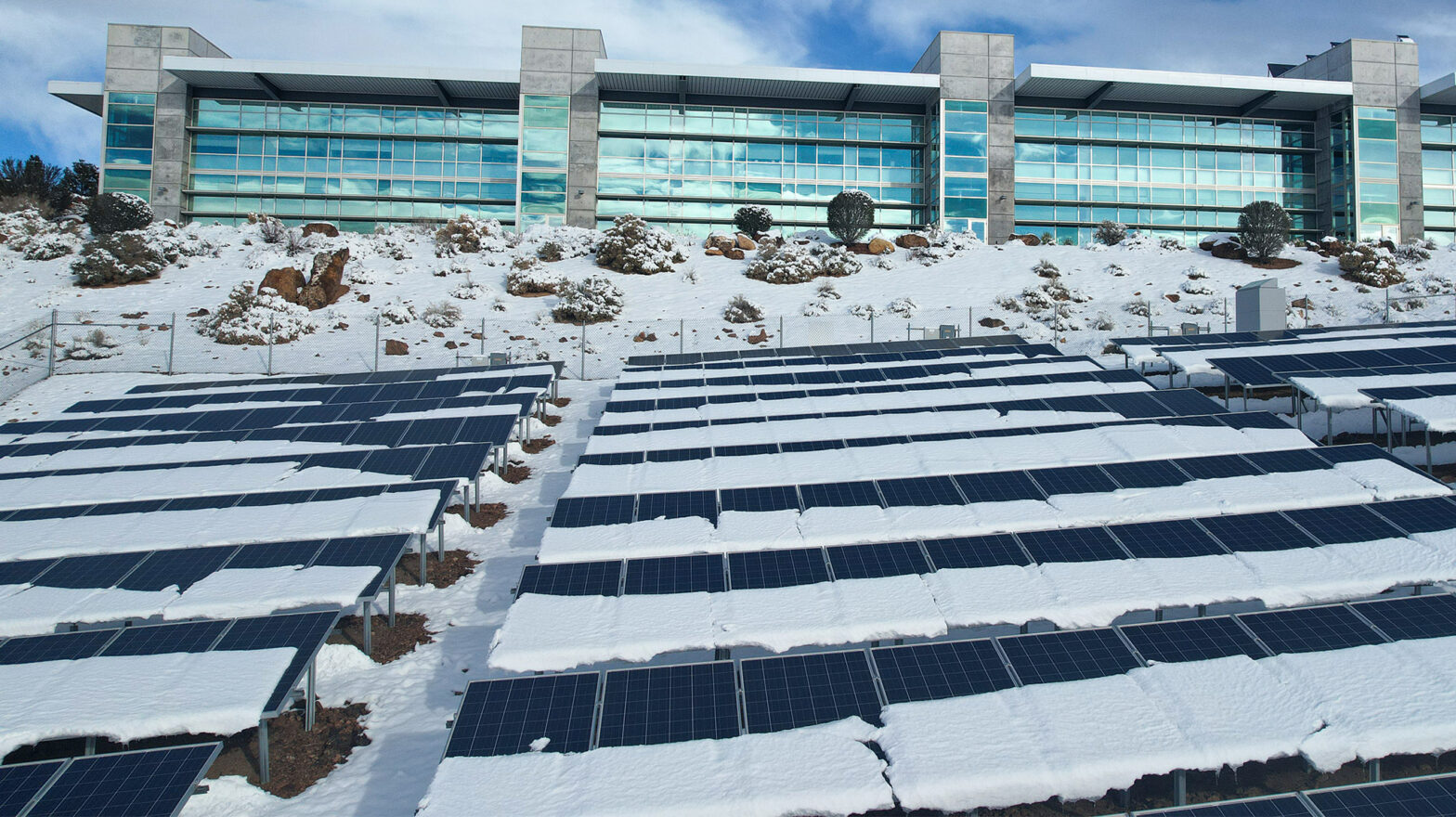We live in such a climate zone where the productivity of the solar park is different due the changing seasons. The longest and darkest season is winter, which lasts from October to mid-February, when the efficiency of the solar park is lower. But how much energy do solar panels produce in winter? How to increase the solar panels productivity? In the following article, we will find answers and debunk some of the most common misconceptions about solar panel productivity in winter.
How much energy do solar panels produce in winter?
Solar panels are a reliable and durable source of energy all year round. A surprising fact is that with cooler and colder weather, the efficiency of the solar park improves. It is due the photovoltaic (PV) technology, which can more efficiently convert sunlight into energy in colder weather.
In addition, the snow reflects additional sunlight onto the solar panels, which increases the system’s ability to produce solar energy even when there is no direct sunlight. This can lead to a situation where, during cold days with sufficient sunlight, the output power of the panels may momentarily be even higher than their rated output. In general, however, the total productivity of solar panels is much lower in winter than in summer.
How to increase productivity?
Short and dark days and snow or frozen ice on the panels are the main reasons why solar panels produce less solar energy in winter.
In addition, the installation angle of the solar panels can significantly affect the amount of snow that accumulates on the panels and the production of solar energy. Solar panels are quite good at preventing snow. If the panels are installed in the correct direction and angle to the sun, they absorb both the sun’s heat and light. The higher the installation angle, the better they are able to melt snow visors even at -10 degrees in sunny weather.
In Estonia, the optimal angle of inclination of solar panels to the ground is 30-40 degrees. This ensures the maximum total productivity per year, and the snow slides off the panels with its own weight. In winter, when the sun is shining, the sun’s rays penetrate through the thinner layer of snow. The panels start to work, warm up, the snow begins to melt slightly, and this contributes to the sliding or melting of the snow layer.
If possible, the solar panels can also be installed on the wall, which is a suitable solution especially for large buildings. Snow does not accumulate on the panels and the productivity of the panels is higher because of this. The solar panels produce a lot of energy especially on sunny, bright and cool spring and winter days in March-April, because the reflection of the snow increases the radiation of sunlight on the solar panels and the angle of inclination to the sun is better.
To achieve the best productivity, you should think about the right angle of inclination either on the roof or on the ground. In this regard, having the right partner to consult with and whose recommendation you can use to install a solar park with the right angle of inclination will help greatly to ensure the best possible productivity.
How to take care of the solar park in winter?
In winter, solar panels do not need special care. If the solar panels are installed correctly and according to the load calculations, they will withstand snowfall, strong winds and other severe weather conditions.
At the beginning of spring, when there is more and more sun, the sun heats the panels so much that the snow slides off the solar panels by itself. Snow is a great cleaning agent for solar panels because when it melts, it washes away all the dirt and grime that has accumulated on the solar panels.
To clean the snow from the roof is only necessary to ensure the durability of the roof, but solar panels do not need to be cleaned from under the snow. Snow could be removed from the solar panels only if there are very snowy winters. This prevents a situation where when the snow melts in the spring, the snow gets soaked and can start to slide off the panel, and the snow barrier cannot hold it. This may damage the panel. The ice that starts to move on the panels in warmer weather is also dangerous, and the lower frame can be pulled away from the glass if it slips.
The solar park also produces electricity in winter
Choosing solar energy for electricity generation is a great option regardless of the season and requires minimal maintenance. The sun is lower in the winter months, but that does not mean that energy production is completely non-existent. The panels can produce energy even in cloudy weather and provide 10-20% of the electricity produced throughout the year in autumn and winter. The missing electricity can be purchased from the grid.
Choosing solar energy for electricity generation is a great choice regardless of the season and requires only minimal maintenance. The right angle of inclination and good solar park installer company ensure the best productivity of the solar park.


